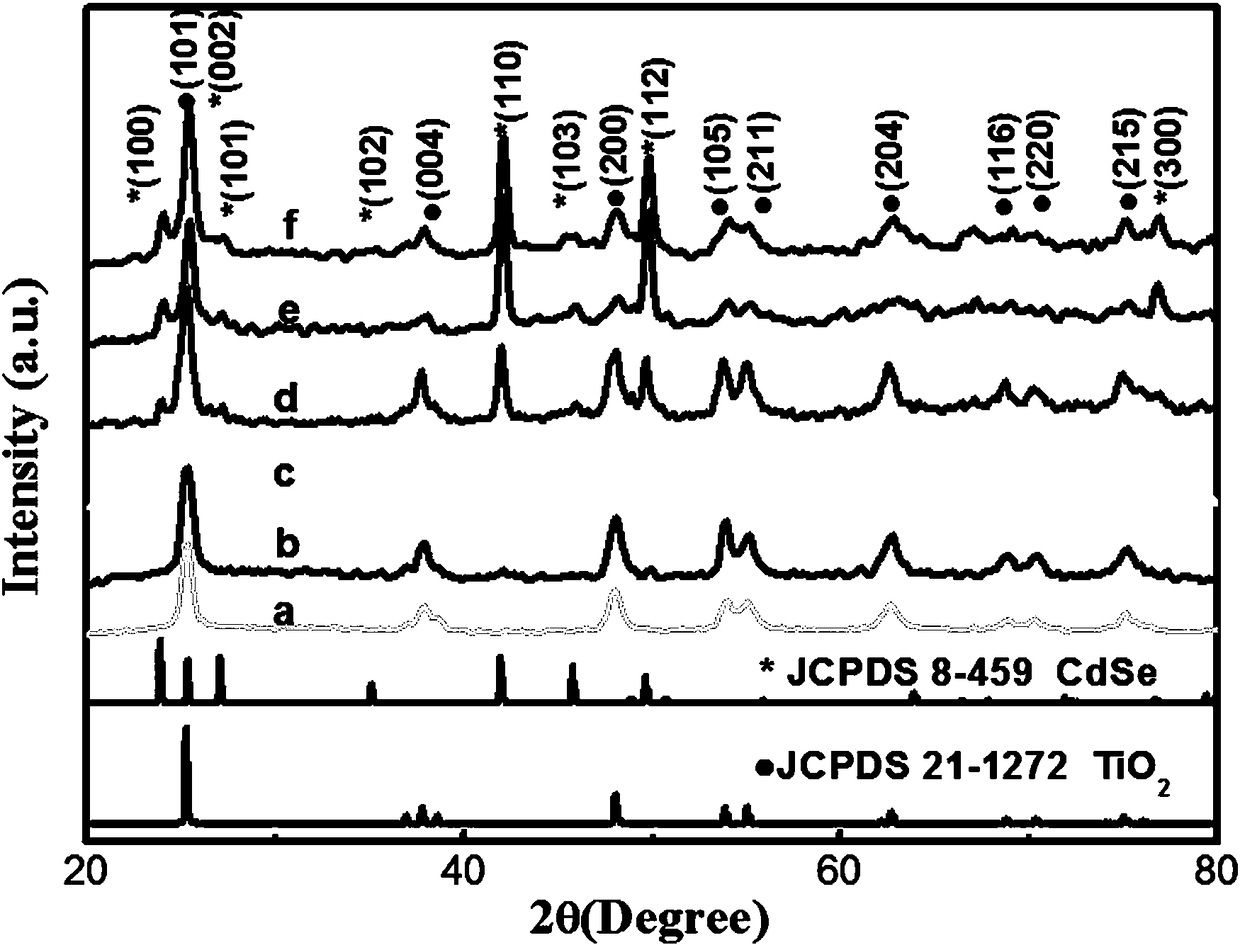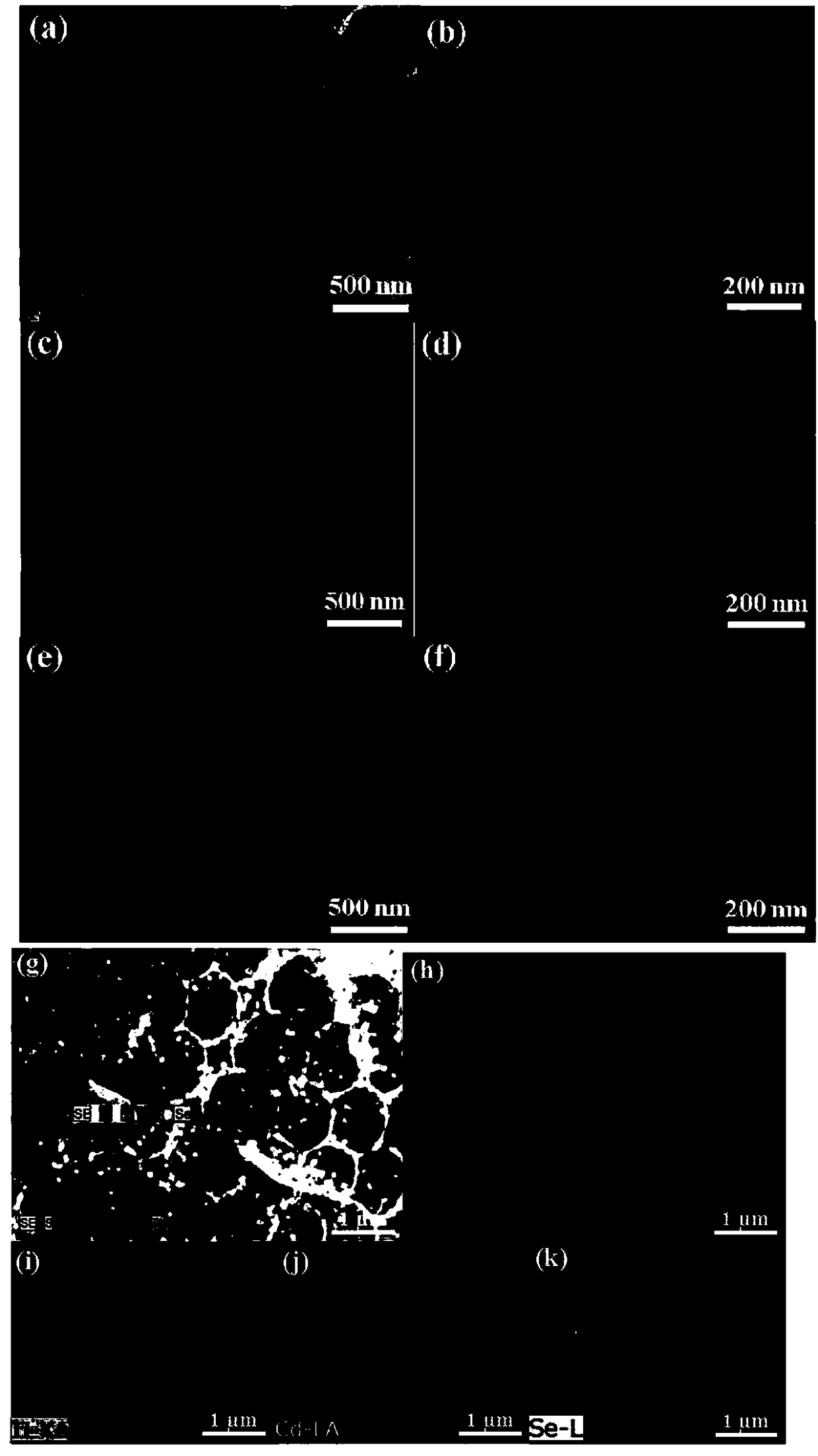Preparation method and application for morphology-controlled CdSe-modified porous TiO2 material
A shape and cone technology, applied in the field of nanomaterials, can solve the problem of high recombination rate of photogenerated electrons and holes
- Summary
- Abstract
- Description
- Claims
- Application Information
AI Technical Summary
Problems solved by technology
Method used
Image
Examples
Embodiment 1
[0044] A kind of preparation method of the CdSe modified porous TiO2 material with controllable morphology, comprising the steps:
[0045] Step 1: Synthesizing monodisperse polystyrene microspheres (PS) with an average diameter of 500 nm;
[0046] Step 2: Preparation of CdO-TiO 2 Intermediate: Using the polystyrene microspheres obtained in step 1) as a template, CdO-TiO was prepared by sol-gel method 2 Intermediate; The sol-gel method prepares CdO-TiO 2 The preparation steps of the intermediate are as follows:
[0047] 1) Put 0.75mLTBOT into 5mL of absolute ethanol, and then magnetically stir at room temperature for 1h to obtain a butyl titanate solution, which is designated as solution A;
[0048] 2) Add 5mL of absolute ethanol to the mixture solution containing 0.5mL of glacial acetic acid and 0.75mL of deionized water, and record it as solution B;
[0049] 3) Then slowly add solution B into solution A, and stir vigorously for 1 hour to obtain a uniform sol-gel;
[0050...
PUM
| Property | Measurement | Unit |
|---|---|---|
| Particle size | aaaaa | aaaaa |
Abstract
Description
Claims
Application Information
 Login to View More
Login to View More - R&D
- Intellectual Property
- Life Sciences
- Materials
- Tech Scout
- Unparalleled Data Quality
- Higher Quality Content
- 60% Fewer Hallucinations
Browse by: Latest US Patents, China's latest patents, Technical Efficacy Thesaurus, Application Domain, Technology Topic, Popular Technical Reports.
© 2025 PatSnap. All rights reserved.Legal|Privacy policy|Modern Slavery Act Transparency Statement|Sitemap|About US| Contact US: help@patsnap.com



